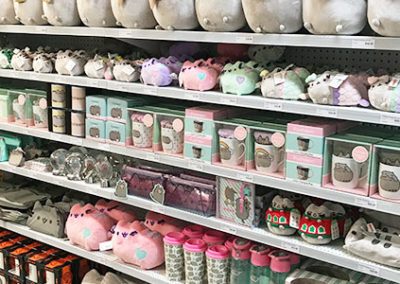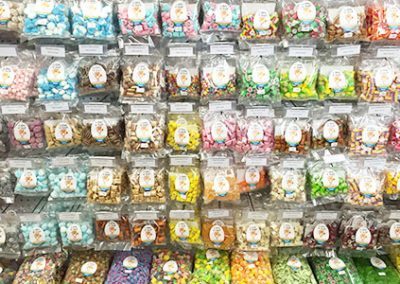How I Luv Candi can Save You Time, Stress, and Money.
How I Luv Candi can Save You Time, Stress, and Money.
Blog Article
The Greatest Guide To I Luv Candi
Table of ContentsNot known Facts About I Luv Candi8 Easy Facts About I Luv Candi DescribedThe I Luv Candi PDFsThe Greatest Guide To I Luv CandiAn Unbiased View of I Luv Candi
We have actually prepared a great deal of organization plans for this sort of task. Below are the common client sections. Customer Sector Summary Preferences How to Discover Them Children Youthful clients aged 4-12 Vivid candies, gummy bears, lollipops Companion with local institutions, host kid-friendly occasions Teens Teens aged 13-19 Sour sweets, uniqueness products, fashionable treats Engage on social networks, work together with influencers Moms and dads Adults with young children Organic and healthier options, sentimental sweets Deal family-friendly promos, advertise in parenting publications Students School pupils Energy-boosting candies, inexpensive treats Partner with nearby universities, promote throughout exam periods Present Customers Individuals searching for presents Premium chocolates, present baskets Produce eye-catching displays, supply customizable present alternatives In evaluating the financial dynamics within our candy shop, we've located that clients normally spend.Monitorings show that a normal consumer often visits the store. Specific periods, such as vacations and special events, see a rise in repeat visits, whereas, throughout off-season months, the frequency may dwindle. da bomb. Computing the lifetime worth of an ordinary customer at the sweet-shop, we approximate it to be
With these aspects in factor to consider, we can reason that the ordinary profits per customer, over the program of a year, floats. The most profitable customers for a candy shop are typically family members with young children.
This demographic has a tendency to make regular acquisitions, boosting the shop's revenue. To target and attract them, the sweet-shop can use vivid and playful marketing approaches, such as lively display screens, appealing promos, and maybe even hosting kid-friendly events or workshops. Creating a welcoming and family-friendly atmosphere within the store can also boost the total experience.
Facts About I Luv Candi Revealed
You can additionally estimate your own revenue by using various presumptions with our monetary strategy for a sweet store. Average regular monthly profits: $2,000 This kind of sweet-shop is frequently a small, family-run organization, perhaps known to citizens yet not attracting great deals of travelers or passersby. The shop may offer a choice of usual candies and a couple of homemade deals with.
The shop does not typically lug rare or costly products, focusing instead on economical deals with in order to keep normal sales. Presuming an average spending of $5 per customer and around 400 customers monthly, the month-to-month income for this sweet-shop would be about. Average month-to-month profits: $20,000 This sweet-shop advantages from its calculated area in an active city area, drawing in a lot of consumers searching for sweet extravagances as they go shopping.
Along with its diverse sweet choice, this store might likewise market relevant items like present baskets, sweet bouquets, and uniqueness things, giving several income streams - sunshine coast lolly shop. The store's area calls for a greater spending plan for rent and staffing but brings about greater sales volume. With an approximated average spending of $10 per customer and regarding 2,000 clients each month, this store might create
Get This Report on I Luv Candi
Situated in a major city and vacationer destination, it's a huge establishment, typically spread over multiple floorings and perhaps part of a nationwide or global chain. The shop uses an immense range of sweets, consisting of special and limited-edition things, and merchandise like well-known garments and devices. It's not simply a shop; it's a location.
The functional expenses for this kind of store are substantial due to the place, dimension, staff, and features used. Presuming an ordinary purchase of $20 per customer and around 2,500 customers per month, this flagship shop can attain.
Group Instances of Costs Typical Month-to-month Price (Range in $) Tips to Decrease Expenses Lease and Utilities Store rental fee, electrical power, water, gas $1,500 - $3,500 Take into consideration a smaller area, discuss rental fee, and make use of energy-efficient lighting and home appliances. Inventory Sweet, snacks, product packaging materials $2,000 - $5,000 Optimize inventory management to decrease waste and track preferred things to stay clear of overstocking.
Marketing and Advertising Printed matter, on the internet ads, promos $500 - $1,500 Focus on affordable digital advertising and marketing and make use of social media sites systems absolutely free promotion. spice heaven. Insurance coverage Business responsibility insurance policy $100 - $300 Search for competitive insurance coverage rates and take into consideration packing plans. Tools and Maintenance Sales register, show shelves, repair services $200 - $600 Buy secondhand tools when feasible and do normal maintenance to expand equipment life-span
The smart Trick of I Luv Candi That Nobody is Talking About
Credit Rating Card Processing Charges Fees for refining card settlements $100 - $300 Work out reduced processing costs with settlement processors or explore flat-rate choices. Miscellaneous Workplace materials, cleaning supplies $100 - $300 Acquire in bulk and look for discounts on products. A sweet-shop ends up being profitable when its total revenue exceeds its overall set expenses.

A large, well-located sweet-shop would clearly have a higher breakeven factor than a small store that does not require much profits to cover their expenditures. Curious about the productivity of your sweet-shop? Experiment with our easy to use economic strategy crafted for sweet-shop. Just input your own assumptions, and it will help you calculate the quantity you need to make in order to run a successful organization.
I Luv Candi - Questions

Finally, financial downturns that minimize customer costs can affect sweet-shop sales and success, making it crucial for candy stores to handle their expenses and adjust to transforming market problems to remain successful. These risks are usually consisted of in the SWOT analysis for a candy store. Gross margins and net margins are vital indicators utilized to assess the success of a sweet-shop business.
Basically, it's the profit staying after subtracting expenses directly pertaining to the candy stock, such as acquisition expenses from suppliers, manufacturing expenses (if the candies are homemade), and team wages for those included in production or sales. Internet margin, alternatively, variables in all the expenditures the sweet-shop incurs, including indirect expenses like management costs, advertising and marketing, rental fee, and tax obligations.
Sweet shops typically have an average gross margin.For instance, if your sweet shop gains $15,000 per month, your gross revenue would be approximately 60% x $15,000 = $9,000. Consider a sweet store that marketed 1,000 sweet bars, with each bar valued at $2, making the overall profits $2,000.
Report this page